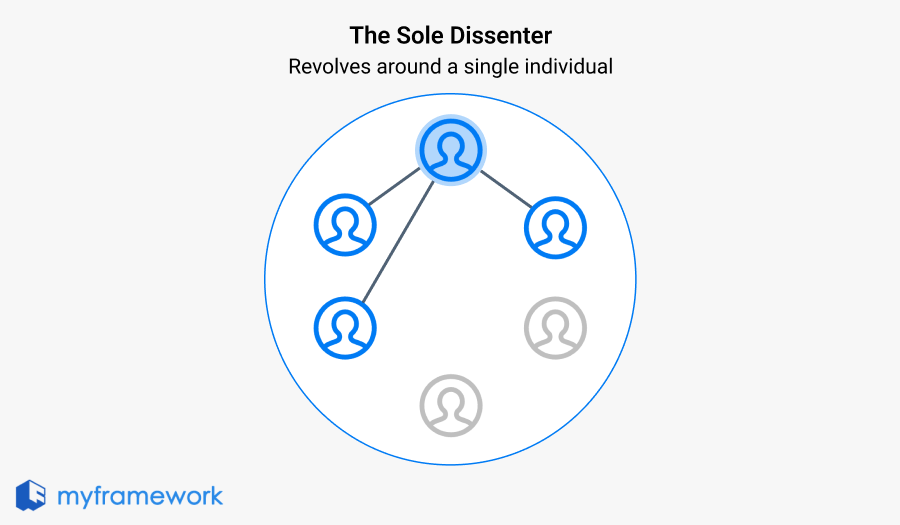Conflict is an inevitable part of any workplace.
In fact, experiencing conflict can be a sign of a team’s growth, as outlined in Tuckman’s Model of Team Development.
Rather than avoiding conflicts, it’s crucial to confront them head-on.
The Patterns of Team Conflict
According to Peterson in Harvard Business Review, there are four types of team conflict.
The Sole Dissenter

In this scenario, one team member holds a differing opinion that contrasts with the majority view.
While this dissent can encourage diverse perspectives and critical thinking, it may also create tension if not managed properly. The dissenter may feel isolated or disregarded, which can impact team morale.
Strategies to Manage This Conflict:
- Encourage Open Dialogue: Create an environment where team members feel safe expressing differing opinions. Facilitate discussions that validate all perspectives.
- Acknowledge Contributions: Recognize the value of the dissenter’s viewpoint and encourage them to share their thoughts broadly, helping to integrate their ideas into the decision-making process.
- Facilitate Collaboration: Pair the dissenter with others to explore solutions together, bridging gaps and fostering inclusivity.

Become a member to read the full content
This framework is available to members only. Upgrade to unlock the content instantly.


